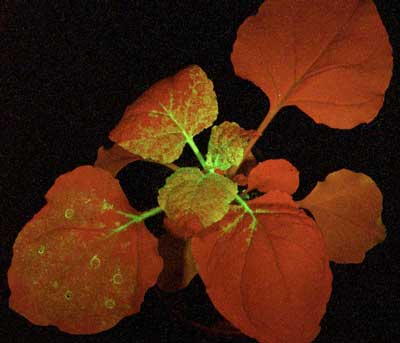| Jan 23, 2018 |
Viral probe gives ringside view of cell-to-cell combat
|
|
(Nanowerk News) A fascinating blow-by-blow account of the arms struggle between plants and viral pathogens, is revealed in new research (PNAS, "A virus-targeted plant receptor-like kinase promotes cell-to-cell spread of RNAi").
|
|
The international research team including the laboratory of Dr Christine Faulkner at the John Innes Centre used a plant virus as a probe to discover how plants defend themselves against invading pathogens.
|
 |
| A plant virus (shown in green). New study reveals key mechanism in plant defence. (Image: JohnInnes Centre)
|
|
The virus' eye view of the infected plant has provided answers to a number of key questions that have until now eluded biologists and the breakthrough could lead to more disease resistant plants.
|
|
On the plant side of the arms struggle the study has identified key receptor proteins which regulate the cell-to-cell movement of RNA interference (RNAi). The movement of RNAi, also known as RNA silencing is a key anti-viral defence mechanism used by plants.
|
|
From the virus side of the argument, the investigation revealed a suppressor protein named C4 which the virus employs to disarm the plant's defence mechanism.
|
|
Dr Faulkner explained: "RNA silencing and its spread throughout the plant is part of the immune response to viruses. Here we used the virus' C4 protein to lead us to the plant proteins that are involved in the spread of RNA silencing.
|
|
"Plants use RNA silencing for many purposes other than in their immune responses, here we've essentially used the virus to unlock a fundamental aspect of how plants regulate these responses."
|
|
"RNA silencing is common to plant responses to most viruses and so understanding how the viral C4 protein works in the plant opens up the doors for other viruses to be looked at.
|
|
"This is a big step in understanding mechanisms that the plant and the virus use during an infection."
|

